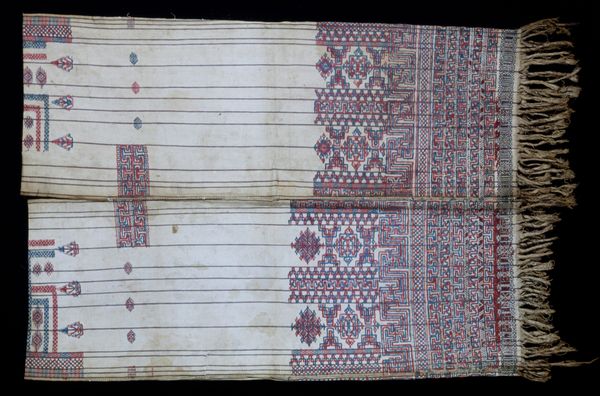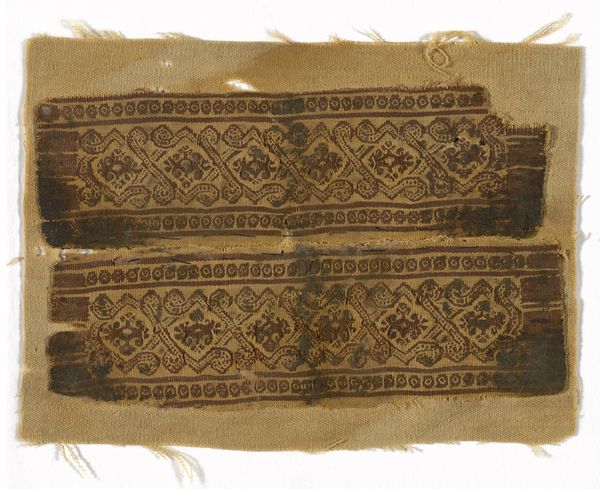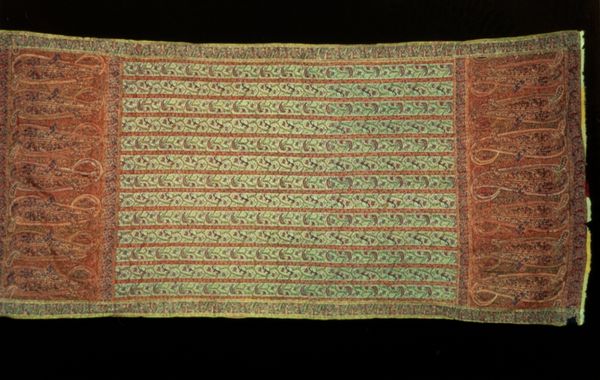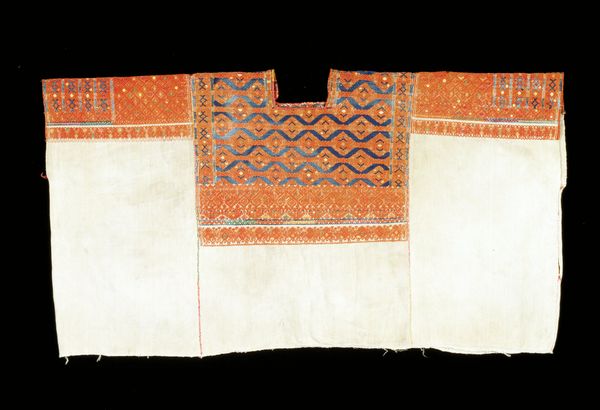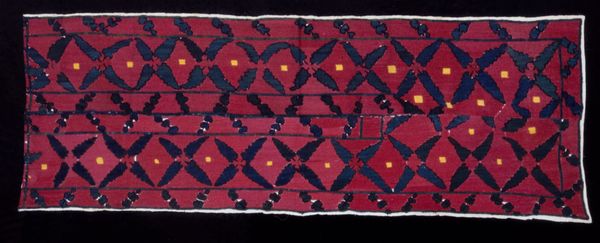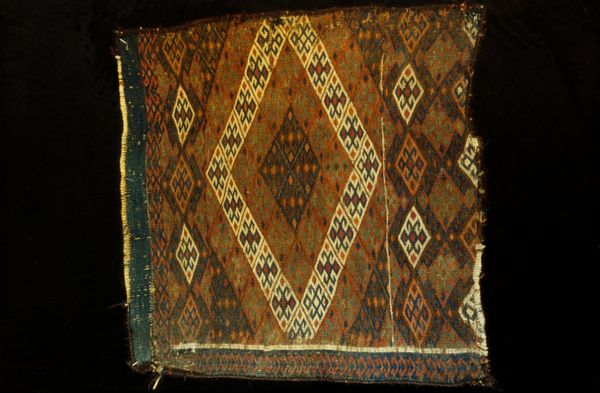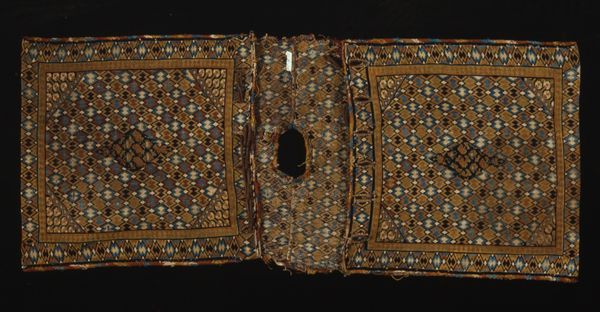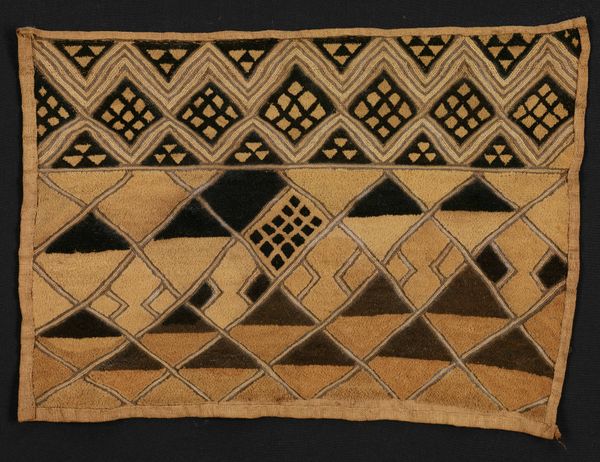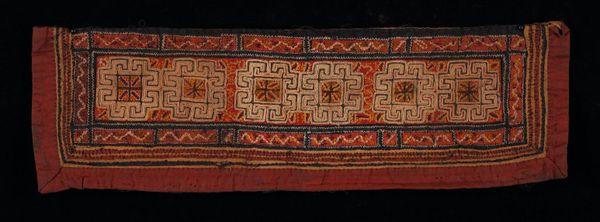
fibre-art, weaving, textile
#
fibre-art
#
weaving
#
textile
Dimensions: 50 3/4 x 32 3/4 in. (128.91 x 83.2 cm)
Copyright: Public Domain
Editor: This is a striking piece – a "Tunic (Küshung)," likely from the 20th century. It's crafted from wool, cotton, and silk. I'm fascinated by how the textile weaves together such geometric precision with apparent imperfections. How do you read the importance of these textiles? Curator: The materiality of this tunic, the fibers themselves—wool, cotton, silk—tell a story of trade routes, available resources, and the labor involved in its production. Consider the time investment in spinning, dyeing, weaving—it’s a record of human effort. This textile is not merely decorative; it is a testament to the intricate systems of production and distribution within its specific cultural context. Editor: So you're saying that the physical aspects of the materials are revealing? Curator: Precisely. It shifts our focus from aesthetics alone to the practical realities of its creation. Where were these materials sourced? How was the wool processed? Who wove this piece, and under what conditions? These questions illuminate the complex relationship between artistic expression and the socio-economic forces at play. This also highlights a shift where "craft" becomes elevated beyond practical use. Editor: That’s fascinating. I never considered the origin of the materials in such detail before. Are we denying any other possible functions that can be more meaningful beyond its means of production? Curator: Absolutely not! However, examining those elements is a tool we can use to better interpret the art and to understand why that textile survives, and how it changes in function across eras. I believe understanding the cultural significance allows for new observations on a new appreciation of design itself. Editor: That makes so much sense. I see the artwork with totally new eyes now, looking beyond the surface of its design, and seeing the layers of material, labor, and cultural values embedded within. Curator: It's about grounding art in its concrete reality, seeing it as the product of specific conditions, not just abstract inspiration.
Comments
No comments
Be the first to comment and join the conversation on the ultimate creative platform.
